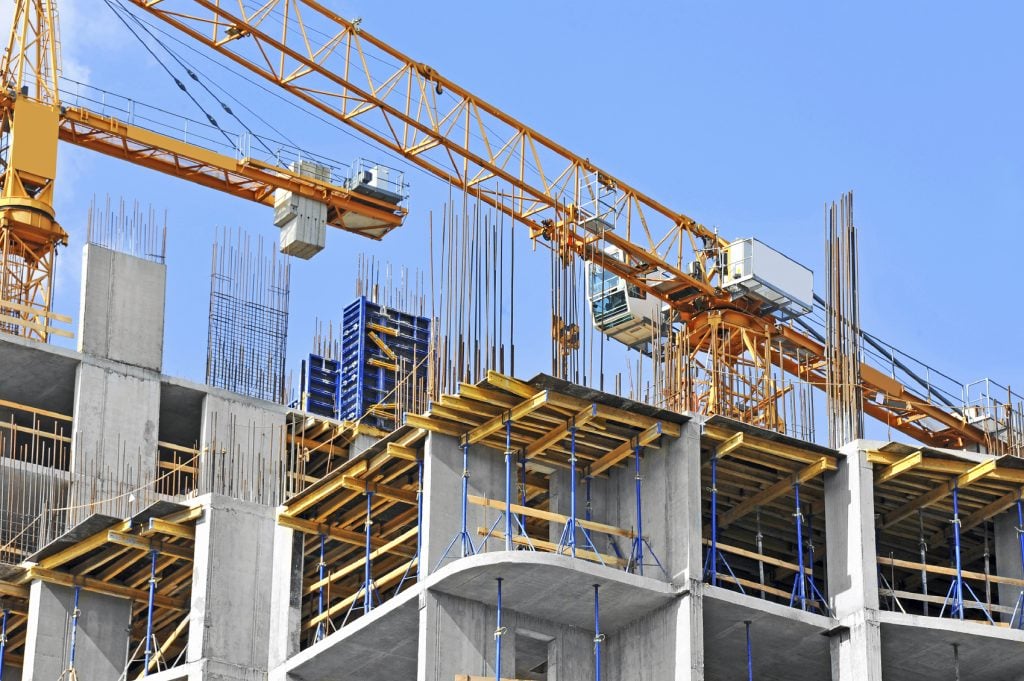A safety factor is like an insurance policy – you hope you never use it. Basically, a safety factor applies to the strength of a product; that is, the strength of a product is more than what is absolutely necessary for the product to work. Safety factors are expressed in terms of a ratio. For example, formwork has a safety factor of 2 to 1. This means that the formwork is twice as strong as it needs to be. In certain applications, particularly under controlled conditions, the safety factor might be quite low. For other applications, the safety factor is high such as in scaffolding where the safety factor can be as high as 6 to 1. The purpose of a safety factor is to guard against unknown events that might occur. This includes misuse of the product, the use of damaged products, and overloading of a product, intentional or otherwise.
The safety factor is not intended to compensate for inadequate design or analysis. Formwork and concrete shoring loads can increase due to the multiple spans of walers, joists, stringers and strongbacks. In engineering, this phenomenon is known as continuity. The continuity of joists and stringers can increase the load on a shoring leg as much as 50% and should be a concern of any falsework designer. However, the latest edition of the American Concrete Institute (ACI) SP-4 Formwork for Concrete book has led some designers to the conclusion that a thorough analysis is not necessary for temporary works and that a safety factor is sufficient to counterbalance inaccurate results. Unfortunately, these falsework designers believe that a simplified analysis can be employed, justifying the approach by arguing that the safety factor will offset a sloppy design.
It is our experience that this method is not adequate and should not be employed when designing concrete shoring; this is especially relevant for multi-level concrete shoring that requires the use of reshores. The safety factor that is required for formwork and shoring components/systems accounts for human error and other unforeseen events. It was never intended to be used as a design tool. Without considering continuity, the calculated load on any post or shoring leg in a multi-span system will not be a true representation of the loads that these components will be supporting, ultimately leading to a potential failure. In multi-level shoring and reshoring applications, the reshoring loads can be grossly under reported. This could lead to overload of the floors, soil or sill carrying the shoring and reshore loads, or worse.
As an example, place manufactured posts spaced at 7 feet in one direction and 10 feet in the other direction to support a 12 inch slab; 15’-0” long manufactured joists at 12” on center spanning the 7 foot direction support the plywood; 21’-0” long manufactured stringers spanning the 10 foot direction support the joists. The design load = 200 psf. The calculated load on the post using tributary area is 14,000 lbs. On the other hand, calculating the load incorporating the continuity in two directions results in a much higher load on the post of 21,875 lbs.! As this example illustrates, the actual load is 56% higher than the tributary area calculation would indicate. This understatement of the shoring loads has led to at least one accident where the designer incorrectly calculated the load on a timber post shore, resulting in the partial failure of a concrete slab.
So what does this mean for contractors? The answer is that you must understand how the concrete shoring loads on your next pour are determined, and what methodology was utilized to calculate these loads. You must ensure that your entire team is on the same page (especially your shoring and reshoring designers), and that you understand the potential risks involved in employing methodology such as that suggested in ACI SP-4. When in doubt, simply ask your concrete shoring designer questions!









